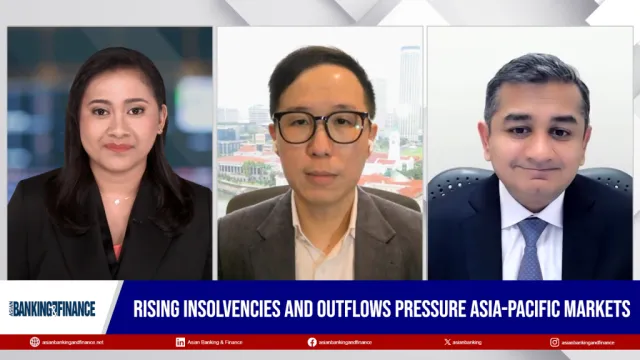
SG banks strong and stable despite uncertain AT1 issuance market: experts
Banks are ramping up AT1 bond issuances after the Credit Suisse wipeout put a halt on issuances, observers said.
Singapore banks have a stronger resilience compared to their Asian counterparts, so experts say. But just how strong they are and how easily they adapt to global banking crises are occasionally put to the test.
The zero write-off of Credit Suisse’s Additional Tier-1 (AT1) bonds presented concerns over the impact of AT1 bond losses on global banks. Although Asian banks are less likely to be dramatically affected, it pays to see how and why Singapore banks stand in the wind.
Credit Suisse’s AT1 write-down
AT1 bonds are a type of hybrid debt that can be converted into equity if a predetermined event occurs, acting as an additional capital and buffer for banks. That’s why Credit Suisse’s $17-billion write-down of AT1 notes early this year caused such a stir in the industry.
The “Lion City” has been marked to have a lesser chance of following in the footsteps of the AT1 write-down of the Swiss bank, according to Gary Ng, senior economist at Natixis Corporate & Investment Banking.
“Singaporean banks have higher ratings than Asian peers with minor AT1 bond price movement and low reliance on AT1, and therefore the impact is limited to credit ratings. Based on our calculation, DBS and OCBC's AT1 to Common Equity Tier 1 (CET 1) ratio is around 5%, lower than the average level of 14% in Asia,” Ng told Asian Banking and Finance.
He emphasised that Singapore’s AT1 bond coupon rate is one of the lowest in the region at 3.6%. Thus, a slight increase would not have a great impact on general funding costs.
Complacency, though, is not the right attitude amid these developments. Asian banks with a global footprint or those said to have significant holdings in AT1 instruments experienced notable declines.
Luckily for other banks, the fall was relatively modest. Whilst it cannot be claimed that Asia is completely shielded, it is at least not in the direct path of a severe storm, Natixis CIB stated in its research note.
“Besides, the sell-off is more intense for Asia’s banks with lower credit ratings. In this context, Singapore and South Korea are relatively better. Even if its credit rating is lower, the market perceives China to have limited financial links with global banks,” the note added.
The challenge Singapore banks tend to face in this scenario is higher funding expenses as lenders could demand higher risk premiums on AT1 papers, Ng said.
ALSO READ: Mitsubishi UFJ postpones AT1 bond issuance after Credit Suisse wipeout: report
Singapore banks’ niche
Singapore is one of the two markets in Asia that practice statutory bail-in regimes to ensure no creditor worse off (NCWO) coverage in times of resolution.
According to a report by CreditSights, the absence of a loss absorption hierarchy makes it unclear when a statutory bail-in regime is also existing. However, banks are mandated to carry resolution plans on what can be solved.
The Swiss Financial Market Supervisory Authority (FINMA) defines an NCWO as safeguarding the rights of creditors which can be impacted by a resolution. Thus, under the NCWO principle, creditors should not suffer a more unfavourable outcome from a restructuring compared to what they would have experienced if the bank had been liquidated.
S&P Global Ratings said predicting precise outcomes can be challenging at times, particularly in the Asia Pacific region where the application of bail-in concepts has not undergone extensive testing.
“When a bank is under stress the factual circumstances are idiosyncratic and depend on the magnitude and nature of the problem and the consequences if it is not solved. Further, bank regulators and public authorities maintain significant clout in normal times but have typically even more clout in stressful times. Regulators and public authorities have considerable powers and a range of tools at their disposal,” a report by S&P Global Ratings said.
Yet, the Swiss regulator did not undergo a resolution process, rather a point of non-viability (PONV). The PONV scenario is often left as an open discussion by regulators. This leaves more room for interpretation of which events are considered infeasible and gives monetary authorities the pliability to write off AT1 notes similar to FINMA.
“In a certain situation, if a limited amount of capital is required, regulators would be able to impose PONV and write off the AT1 bondholders without going through a resolution process, and therefore, without shareholders facing losses first. We do expect, unlike in the case of FINMA, that APAC regulators will use the PONV clause if required in situations where they have to arrange for capital support and not for situations where they arrange for liquidity support,” explained CreditSights.
Singapore is known to strictly comply with its NCWO framework that creditors who receive a lower amount during a resolution process compared to what they would have received if the bank had been liquidated, can seek reimbursement for the shortfall from a resolution fund provided by the financial industry.
ALSO READ: MAS to set expectations on credible transition planning
“The creditor compensation framework will also apply in the exceptional situation where MAS departs from the creditor hierarchy in order to contain the potential systemic impact of the [financial institution’s] failure or to maximise the value of the [financial institution] for the benefit of all creditors as a whole,” the Monetary Authority of Singapore (MAS) said in a statement.
It is important to note that AT1 papers are strictly offered in Singapore’s wholesale market. Only institutional and accredited investors, or transactions in denominations worth more than S$200,000 can access this type of bond or investment.
Issuance in the future
The MAS, being the central bank, continued to remind financial institutions that investors shall and always be informed of their offerings, especially AT1bonds. Further, pressing on the fact that disclosures, features and risks should be kept clear and concise.
Natixis’ Ng said Singapore banks issuing AT1 bonds in the regulatory environment are all about “confidence and predictability.”
“The monetary and financial regulations imposed by MAS are already one of the most stringent in the world to provide for a stable financial environment, and the stability could benefit local banks when competing with other banks in the market,” he said.
Despite numerous banks putting a halt to their AT1 issuances in the aftermath off the Credit Suisse incident, some are now slowly getting back in the grind.
“There is no new issuance from Singapore after the UOB’s deal in January 2023. In the medium run, Singaporean banks are likely continuing their issuance once sentiment improves,” Ng said.
Such an outlook suggests that in the face of uncertainties in the AT1 issuance market, Singapore banks remain strong and stable. And that’s because their resilience and adaptability during global banking crises is built-in, proving once again why they stand tall amidst the winds of change.


















 Advertise
Advertise








